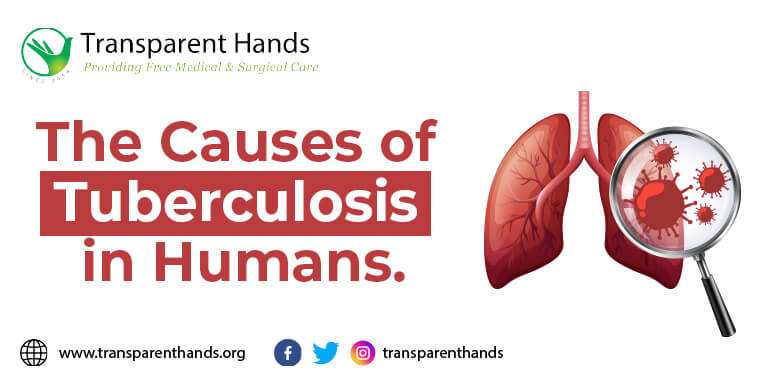Symptoms of Tuberculosis – It’s Causes & Prevention in Humans

Tuberculosis – An Overview
Tuberculosis (TB) is a bacterial infection caused by the Mycobacterium tuberculosis bacterium. It primarily affects the lungs, but it can also affect other organs such as the brain, kidneys, and spine.
When an infected person coughs or sneezes, the bacteria are inhaled by others. The infection can be either latent or active, and they can be diagnosed with the help of symptoms of tuberculosis. The bacteria are present in the body in latent tuberculosis, but the person has no symptoms and is not contagious. In cases of active tuberculosis, the bacteria that cause coughing, chest pain, fever, and fatigue can be transmitted to others.
Antibiotics can be used to treat tuberculosis, but the treatment can be lengthy and complicated, requiring a combination of multiple medications taken over several months. It is critical to finish the entire course of treatment to ensure that the infection is eradicated and to prevent the development of drug-resistant strains of the bacteria.
Causes of Tuberculosis
Tuberculosis (TB) is caused by bacteria called Mycobacterium tuberculosis. The disease is spread through the air when an infected person coughs, sneezes, speaks, or sings, and another person inhales the bacteria. TB is not caused by lifestyle or genetic factors, but rather by the bacteria that are transmitted from person to person. Factors that increase the risk of getting TB include weakened immune systems due to diseases such as HIV, malnutrition, and diabetes, as well as living or working in crowded or poorly ventilated environments.
Risk Factors for Tuberculosis
Multiple factors increase the risk of tuberculosis infection. One of the most significant risk factors is having a weakened immune system. People with weaker immune systems, like those with HIV/AIDS, who are getting chemotherapy or an organ transplant, or who take certain medicines, like corticosteroids, are more likely to get TB. In these situations, the immune system might not be able to fight off the bacteria as well as it should, which could lead to TB.
Another factor that increases the risk and symptoms of tuberculosis infection is close contact with an infected person. TB is highly contagious, and being in close contact with an infected person increases the risk of infection. This is especially true for people who live or work in overcrowded places or those with poor ventilation, like prisons or homeless shelters. In these environments, TB can spread more easily, and the risk of infection is higher.
TB infection is also associated with malnutrition. Those with malnutrition, particularly vitamin deficiencies, are more susceptible to TB infection. Malnutrition weakens the immune system, making it more difficult for the body to combat bacteria.
Age can also increase the risk of tuberculosis infection. Children and the elderly are more susceptible to contracting tuberculosis. Children’s immune systems are weaker, making them more vulnerable to the bacteria. Elderly people may also have weakened immune systems and other health issues that make them more vulnerable to bacteria and the complications of tuberculosis disease.
Finally, substance abuse, especially intravenous drug use, can weaken the immune system and increase the risk of tuberculosis infection. Substance abuse can also increase the risk of bacterial exposure, especially in crowded environments such as drug treatment facilities.
Symptoms of Tuberculosis
TB can have different symptoms depending on whether the infection is active or latent.
The symptoms of active TB typically include:
- Coughing that lasts for more than three weeks
- Chest pain or discomfort
- Coughing up blood or phlegm
- Fatigue
- Loss of appetite and weight loss
- Night sweats
- Fever
- Chills
- Shortness of breath
- Sweating, especially at night
- In addition to these symptoms, TB can also affect other parts of the body, such as the brain, kidneys, and spine, causing symptoms, such as headaches, confusion, back pain, and joint pain.
If you think you may have TB or have been exposed to someone with TB and are showing symptoms of tuberculosis, it’s important to get tested and treated as soon as possible.
How to Prevent Tuberculosis?
Preventing tuberculosis (TB) involves a combination of measures to reduce the risk of infection and the spread of the bacteria. Here are some ways to prevent TB:
- Vaccination: The BCG vaccine can protect against tuberculosis, especially in children. It is recommended for people who are at high risk of TB exposure, such as healthcare workers, in countries with high TB rates.
- Avoid direct contact with infected people: TB spreads through the air when an infected person coughs, sneezes, or talks. Avoiding close contact with infected individuals can reduce the risk of exposure to the bacteria.
- Improve ventilation: TB is more likely to spread in crowded or poorly ventilated environments. Improving ventilation in homes, workplaces, and public transportation can help reduce the risk of tuberculosis transmission.
- Cover your mouth: When coughing or sneezing, cover your mouth and nose with a tissue or use the inside of your elbow. This can help prevent the spread of TB and other respiratory infections.
- Practice good hygiene: Washing hands regularly with soap and water can help reduce the risk of infection. Avoiding sharing items such as utensils, cups, and towels can also reduce the risk of transmission.
- Manage other health conditions: A weakened immune system can increase the risk of TB infection. Managing other health conditions such as HIV/AIDS, diabetes, and malnutrition can help strengthen the immune system and reduce the risk of TB infection.
- Screening for tuberculosis: Screening for tuberculosis can help identify infected people and provide them with appropriate treatment. Screening is especially important for people who are at high risk of TB infection, such as healthcare workers, people who live in crowded or poorly ventilated environments, and people with weakened immune systems.
Must Read:










Leave a Reply